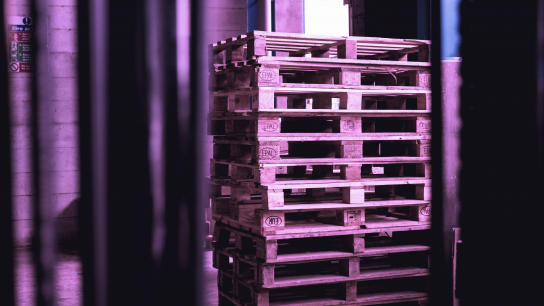Logistics
by
As the COVID-19 pandemic spread across the globe, the traffic in the ports of China reduced to a trickle in January and February 2020. Shortly thereafter the volume of goods arriving at the ports of the Americas and Europe and Africa from China also began to plummet. Ships leaving these continents with raw materials or industrial constituents had to slow-steam to their Asian destinations or wait at anchor off the shores of Chinese harbours, since those ports were not receiving goods either. Freight rates for dry cargos dropped, and charter rates for crude oil tankers skyrocketed. The latter was in response to a massive glut in oil, itself resulting from the drop in demand and a price war between Russia and Saudi Arabia resulting in overproduction; as landside storage tanks were full, and tankers, barges, and any old serviceable floating storage was brought out to store the crude at sea.
Just as maritime journeys and flights slowed down or came to a halt, in much of global North certain elements of logistics intensified. Home deliveries of goods soared. A wave of demand for toilet paper, flour, yeast, and personal electronics used for home-working crested and then subsided. In both the global North and the global South, dependence on poorly waged delivery persons (whether working for logistical behemoths such as Amazon or the mom-and-pop shop down the street) accelerated. States, corporations, medical organisations and individuals throughout the world all frantically conducted global searches for personal protective equipment (PPE), masks, and certain medicines.
In the wake of these upheavals, comparisons and predictions came thick and fast: this was a moment like the Great Depression of the late 1920s, more dramatic than the Great Recession of 2008/2009. Pundits argued that the structure of global trade had changed for good; some even claimed this marked the end of globalisation. The crashing of oil prices led some to prophesy the end of the fossil energy era.
There is an element of wishful longing about these predictions. If capitalism really contains the seeds of its own destruction, then it would make sense that the very same global relations of trade and travel that caused the pandemic to spread so quickly across the surface of the earth will also fall victim to it.
A kind of environmental or pathological determinism sits at the heart of this type of soothsaying. And these types of mechanistic explanations also belie the resilience of capitalism and its cyclical ability to recuperate, often in a much more austere, brutal, rapacious form. Such events as pandemics and subsequent cataclysmic drops in employment and GDP can trigger broader structural changes and result in the creation of new state institutions and regulations. But it is not foretold that these institutions or regulations will be humane, or orientated towards welfare and redistribution.
Perhaps more importantly, the juxtaposition of the pandemic in the first five months of 2020 with the antiracist BlackLivesMatter protests of June reveals the crucial role of constant, relentless and long-standing political organisation, as well as sharp, decisive angry protest and direct action in triggering change. Whether transformations to the symbolic order—statues, stories, commemorative names—or changes, however meagre, to material benefits (for example cuts in police funding), political mobilisation has seen results.
If there are post-pandemic changes to be seen in the logic and operation of global supply chains it will be because of these forms of political mobilisation along the supply chains: from Amazon warehouse workers protesting the shortage of PPE, to essential workers demanding sick pay, to seafarers abandoned at sea threatening to strike in order to be able to go home. Any long-lasting effect will be in response to such activities.


